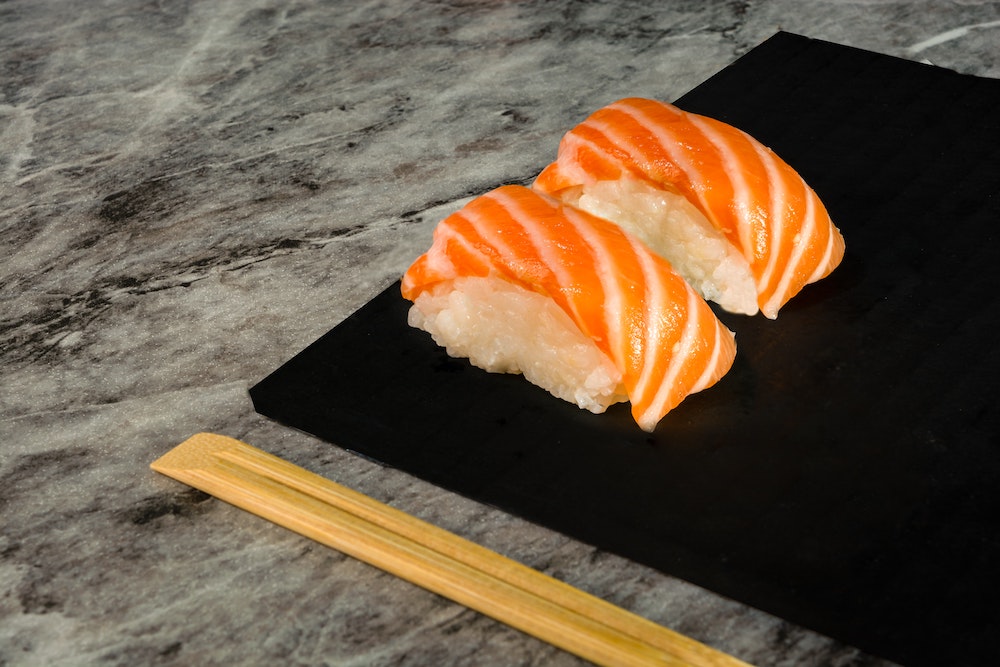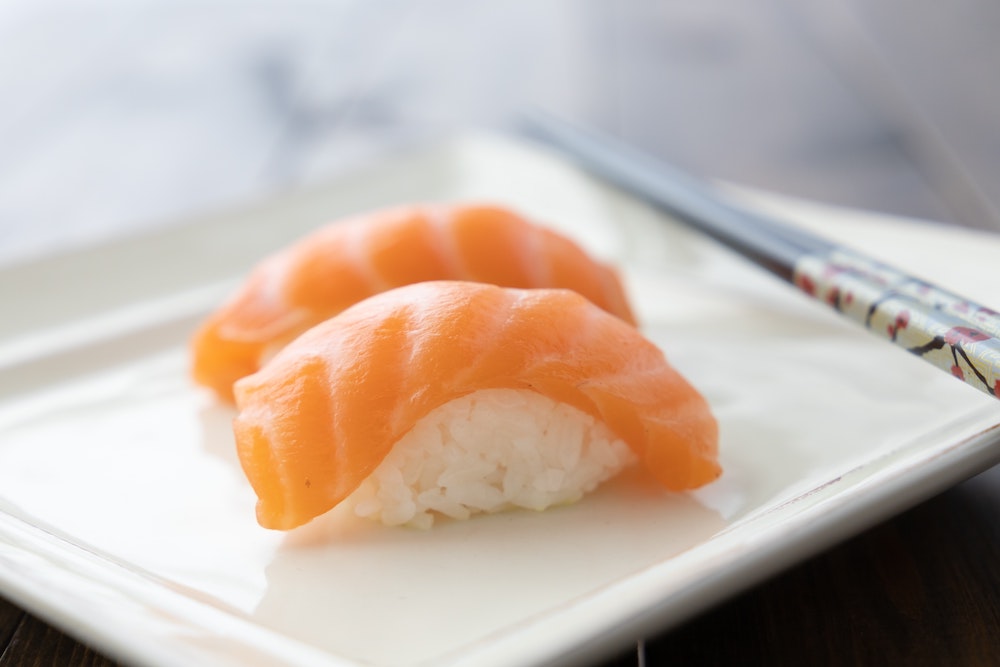Sushi Etiquette – Do you remember the first time you were introduced to sushi? Those bright and colourful rice rolls filled with all of your favorited ingredients, made fresh daily and super affordable at that?
By now, almost every country around the world will have a sushi joint selling anything from crunchy rolls of prawn tempura to delectable pieces of salmon nigiri. Most places will offer you a small portion of wasabi and soy sauce to top or dip your sushi in before you take a bite.
The moment we said that, we know you’re imagining that moment of inhaling the smell of sushi before you pop it into your mouth. It’s the small window of anticipation that anyone who’s ever eaten sushi will recognise!
As one of the most popular foods globally, sushi is a staple for anyone’s diet!

However, did you know that there is such a thing as sushi etiquette?
You may have grown up simply picking up your sushi with your chopsticks and dipping it into a small plate of soy sauce mixed with wasabi before taking a bite.
However, when you’re eating it in Japan, there is a list of etiquette norms for consuming this delicate dish that stems from hundreds of years of food culture. Some of them you may be aware of, such as never mixing the pickled ginger and sushi together, but others might be completely unheard of, such as eating the sushi rolls only after sashimi has been consumed.
We’ll take you through 10 things not to do when you eat sushi in Japan. Read this ahead of entering a sushi restaurant before you accidentally commit a faux pas in front of a seasoned Japanese sushi chef and you have no idea why he’s watching you in horror!
1. Never put your wasabi directly into your soy sauce

This is one of the most common mistakes that people around the world make when eating sushi, and understandably so. Many prefer the soy sauce mixed with wasabi as it provides a subtle yet brilliant hit that cuts through the umami of the soy sauce.
However, a Japanese sushi chef will always use what they deem as the perfect amount of wasabi for each piece of sushi. This is to ensure that the wasabi does not overwhelm the subtle flavours of each part of the sushi.
By mixing the wasabi into your dipping sauce, you’re likely missing out on the true flavours of the sushi.
2. Never dip the rice of a nigiri sushi directly into the soy sauce

Nigiri is a small portion of perfectly shaped rice topped with a precision-cut slice of fish. Most foreigners who order nigiri at restaurants tend to dip the rice part (at the bottom) into soy sauce for more flavour. However, this makes it wet and thus it will crumble.
The correct way to eat it would be to turn the nigiri upside down and dip the top layer in, and place it whole into your mouth to enjoy.
3. Do not rest your chopsticks by sticking them out of the rice bowl

In Japan, people never leave chopsticks sticking out of rice bowls, or any dish for that matter. This is because it resembles to incense sticks that are commonly used at funerals services in traditional Japanese culture.

4. Do not rest your chopsticks directly on the table

Rather than letting customers rest their chopsticks onto the table, sushi restaurants in Japan will provide a tiny stand for you to rest your chopsticks on. It is customary to use this when you’re not utilizing your chopsticks.
If you find yourself without one, simply fold the paper wrapper that comes with the chopsticks and place your chopsticks on that instead.
However, it’s also acceptable to simply eat the sushi with your hands if you don’t have chopsticks.
5. Do not bite your nigiri; eat it whole

It is a tradition in Japan to enjoy sushi whole. It is considered rude to bite into and spoil the perfect form of nigiri that the sushi chef has masterfully created.
The correct way to eat sushi would be to eat the entire piece in one go. If the sushi is too big to eat in one go, try and take a maximum of two bites only. This is usually the case with maki rolls.
You May Also Like: The 14 Best Omakase Sushi Restaurants In Tokyo
6. Sushi Etiquette – Do not ask for brown rice

Traditionally, short-grain rice is used in sushi as it has the perfect texture and stickiness to hold the roll or piece together. The authenticity of short-grain rice shines through when simply paired with a small dab of wasabi and freshly sliced fish.
In more recent years, brown rice sushi substitutes have been popping up around the world in an attempt at appealing to more health-conscious people.
However, when you’re in Japan, you must never ask for brown rice. The tougher and rougher texture means that it’s chewier than usual, and can also mask the true taste of the sushi.
You May Also Like: Learn How To Make Sushi In Tokyo At These 12 Classes
7. Eat sushi rolls (your standard maki-sushi) after eating the lighter, smaller sashimi and nigiri pieces

A general rule that is followed in Japan is that the smaller, lighter sushi (e.g., sashimi or nigiri) are generally eaten before the heavier rolls (e.g., maki or temaki).
This is to ensure that you don’t overload on the heavier pieces first and have enough stomach space to enjoy all the different types of sushi.
Simple vegetable rolls should be eaten before those with protein fillings, with fish coming before chicken and so on. Fried fillings such as tempura should be eaten last.
8. Never mix the ginger with the sushi

People may be confused about the free availability of the pink pickled ginger that’s often placed on tables at sushi restaurants. They may even assume it’s something to eat alongside sushi with soy sauce and wasabi!
However, this is not the case. This pickled ginger is made from young ginger roots in brine solution. It is used as a palate cleanser in between eating sushi, to ensure you are tasting the sushi delicacy at its optimum every time.
You May Also Like: Why Japanese Always Drink Iced Water
9. Sushi is synonymous with simplicity; they never overload the ingredients

Love your spicy dragon rolls? Can’t help but order the tempura volcano roll every time? Well, keep those dish names locked up and reserved for western countries only, because in Japan, there is none of that!
In fact, it’s relatively well-known that any sushi dish with more than 10 ingredients is considered a blemish to the sushi name. Sushi chefs get trained early on that the beauty of sushi is in its simplicity and how few ingredients can come together to create the perfect balance of flavours and textures.
10. Don’t play with your chopsticks

This is a pretty standard rule across most Asian restaurants who offer chopsticks as an eating device. However, Japanese sushi etiquette is on the more stringent side, and with citizens as law-abiding as the Japanese, it is highly frowned upon to play around with your chopsticks at any time during the meal.
If you’re done, simply place your chopsticks down in the small stand provided to you by the restaurant.
—
We hope you’ve enjoyed learning about all the sushi etiquette that’s prevalent in Japan! As foreigners, we’re pretty much given a free pass if you absolutely cannot remember every single rule (so don’t stress!), but at least now you know about them and can call upon this knowledge if needed!
Wanna know more about sushi, make sure to read this blog post about the most popular traditional sushi rolls.











Your advice about dipping nigiri in soy sauce is the opposite of what I was taught. While it is true that the soy sauce will make the rice ball disintegrate, I was taught that you should never — let me emphasize *never* — allow the fish to touch the soy sauce directly, as it will overpower the flavor of the fish. And that the reason for turning the nigiri upside down as you place it in your mouth is so that the fish (unsullied by soy sauce) touches your tongue first, before any other flavor can meddle with its purity.